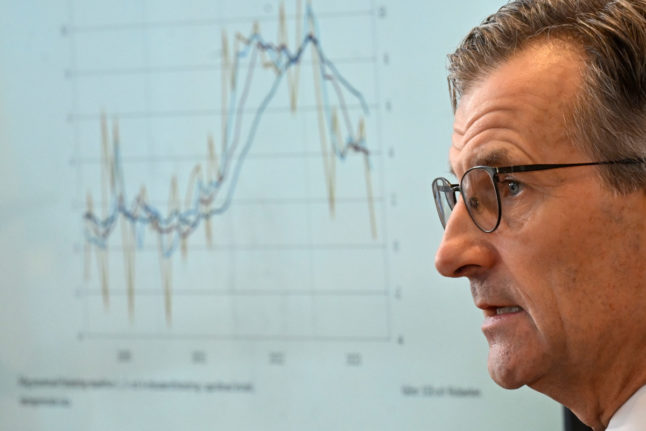The Riksbank on Thursday decided to keep Sweden’s main interest rate – the so-called policy rate – unchanged at 4 percent for now, but said that falling inflation meant it may soon be time to cut it.
“Activity in the Swedish economy has slowed down, and inflation has fallen significantly. In addition, inflation expectations are close to the target and wages are increasing moderately,” it said.
“The policy rate can therefore probably be cut sooner than was indicated in the November forecast. If the prospects for inflation remain favourable, the possibility of the policy rate being cut during the first half of the year cannot be ruled out.”
The Riksbank did not publish a forecast for future expected rate adjustments, but its next two interest rate announcements before the summer are set to come in March and May.
IN FIGURES:
General market forecasts suggest that the policy rate could be lowered another four or five times this year, followed by one or two times next year to 2-2.25 percent, reports the TT newswire.
This doesn’t automatically mean that interest rates on mortgages will drop as low as 2.5 percent by the end of 2025, but we can probably expect them to be substantially lower than they were at the end of 2023. The policy rate doesn’t directly control mortgage rates, but there’s an indirect effect.
As an example, if interest rates on variable mortgages were to fall at the same pace – down by two percentage units between now and the end of 2025 – the monthly cost of a 3 million kronor mortgage would become 5,000 kronor cheaper a month, before any tax deductions are factored in.



 Please whitelist us to continue reading.
Please whitelist us to continue reading.
Member comments